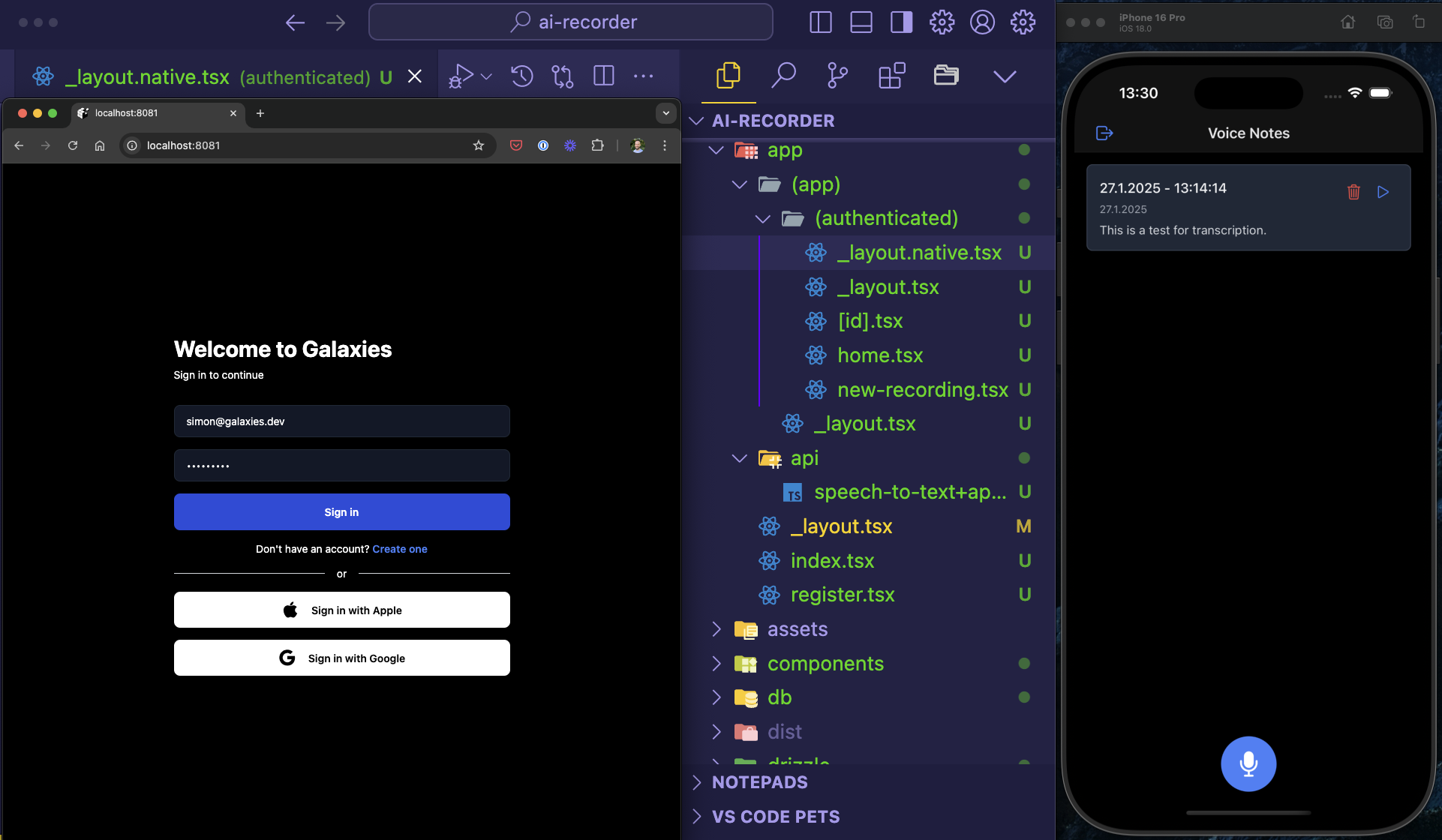React Native Tech Stack for 2025
Last update: 2025-01-01

Are you starting a new React Native project in 2025?
You probably heard that 2025 is the time for React Native - maybe because Youtube recommened a certain video to you 😎
You’ve probably aslo noticed there are dozens of options for every single feature you need to build. In this article, I’ll walk you through all the technology you should know about and use to ship epic React Native apps in 2025.
The Core Setup: Get Started with Expo
Why Choose Expo?
When starting a new React Native project in 2025, it’s advisable to use Expo. It’s the recommended framework according to the React Native documentation, and it’s particularly advantageous for streamlining your development process. While you can opt to build without a framework, doing so would essentially mean crafting your own framework from scratch. Expo offers an efficient solution and is widely used by major companies.
Embrace TypeScript
Now, I know the question arises every year - can I use React Native without TypeScript?
The answer is yes, but using TypeScript provides numerous benefits. Its type-checking features help spot errors, making the debugging process smoother. Remember that the practical applications of TypeScript are invaluable for catching bugs like returning a number instead of a string.
Navigation: Expo Router vs. React Navigation
Choosing between Expo Router and React Navigation can be a bit tricky. Both have similar mechanisms under the hood, but Expo Router uses file-based routing, which some developers, including myself, find intuitive. It brings in nifty features like API routes and by now also React Server Components.

However, if your focus is primarily on native app development, React Navigation could suffice. Yet, for beginners, I recommend starting with Expo Router for its ease of use and comprehensive features.
UI and Styling: Tailoring Your Visual Components
Exploring Component Libraries
When it comes to UI and styling in React Native, developers have diverse preferences. Options like NativeWind integrate Tailwind CSS, enhancing the styling capabilities of your app. Similarly, Unistyles offers a style sheet-like API with added functionalities, while Tamagui provides a robust, cross-platform styling solution that also integrates some components.
Each of these libraries has its strengths. Personally, I lean towards NativeWind due to its familiarity with Tailwind CSS.
Besides all of that, React Native Reanimated remains my top choice for adding fluid animations to apps, providing exceptional performance alongside a rich feature set. On top of that, Reanimated 4 introduces CSS Animations, making it even more powerful.
Tip: If you are looking for something more lightweight, you can try out Moti
State Management: The Right Tools for Your Needs
State management is a critical part of app development, and it’s essential to differentiate between server state and app state.
Managing Server State
For managing server state, TanStack Query is a standout choice, offering an effective way to handle API calls and server interactions.
const queryClient = useQueryClient();
const { mutate: sendMessage, isPending } = useMutation({
mutationFn: async () => {
return createMessage({ content: message });
},
onSuccess: () => {
// Invalidate messages query to refresh the list
queryClient.invalidateQueries({ queryKey: ['messages'] });
router.back();
},
onError: (error) => {
console.error('Failed to send message:', error);
}
});Even if you only make a handful of API calls, TanStack Query is a great tool to have in your toolbox.
Handling App State
On the app state front, Zustand is my recommendation. It’s praised for its Redux-like store and action concepts but with more simplicity.
import { create } from 'zustand';
const useBearStore = create((set) => ({
bears: 0,
increasePopulation: () => set((state) => ({ bears: state.bears + 1 })),
removeAllBears: () => set({ bears: 0 })
}));Though other libraries like Jotai offer atomic state management, Zustand stands out in performance, popularity and ease of use.
However, besides all the great choices, the Context API is still a legit way to manage state in React Native.
Must-Have Packages for Enhanced Functionality
When building your app, certain packages can greatly enhance functionality. Here’s a short list of packages you should consider:
- React Native MMKV: Essential for fast key-value storage.
- React Hook Form: Optimized for form management in React Native.
- FlashList: A powerful alternative to FlatList, offering improved efficiency.
- Expo Image Package: Tailored for speed with built-in memory and caching.
- Zeego: Beautiful, native menus
- Clerk: My go-to service for authentication and user management
- RevenueCat: The best way to monetize your app
- Vision Camera: Powerful, high-performance Camera library for React Native
- Gesture Handler: The best way to handle gestures
Essential Tooling and Monitoring
Choose an AI-Enabled Editor
Switching to an AI-supported editor can significantly boost productivity. I recommend the Cursor editor, which excels in generating code across multiple files. I couldn’t live without it anymore.
Testing and Monitoring
For UI testing, employ Maestro and pair it with Unit Tests from React Native Testing Library for an extensive testing setup. When monitoring your app’s performance and bugs, Sentry provides real-time insights and error tracking, ensuring your app runs smoothly.
CI/CD Simplified with Expo EAS
For continuous integration and delivery, look no further than Expo EAS. This service simplifies the deployment process by handling builds in the cloud and automatically submitting your app to iOS and Android stores.
Conclusion
The landscape of React Native in 2025 is rich with innovation and resources. From leveraging frameworks like Expo to choosing efficient state management and styling libraries, developers have a plethora of options at their disposal. Remember, the best tools are those that align with your project needs and enhance your workflow.
If you want to dive deeper into React Native I’ve got just the thing to help you get started:
Our new Zero to Hero React Native Mission on Galaxies.dev will teach you everything you need to know to build your first React Native app.
So what are you waiting for? Your React Native journey starts today.
